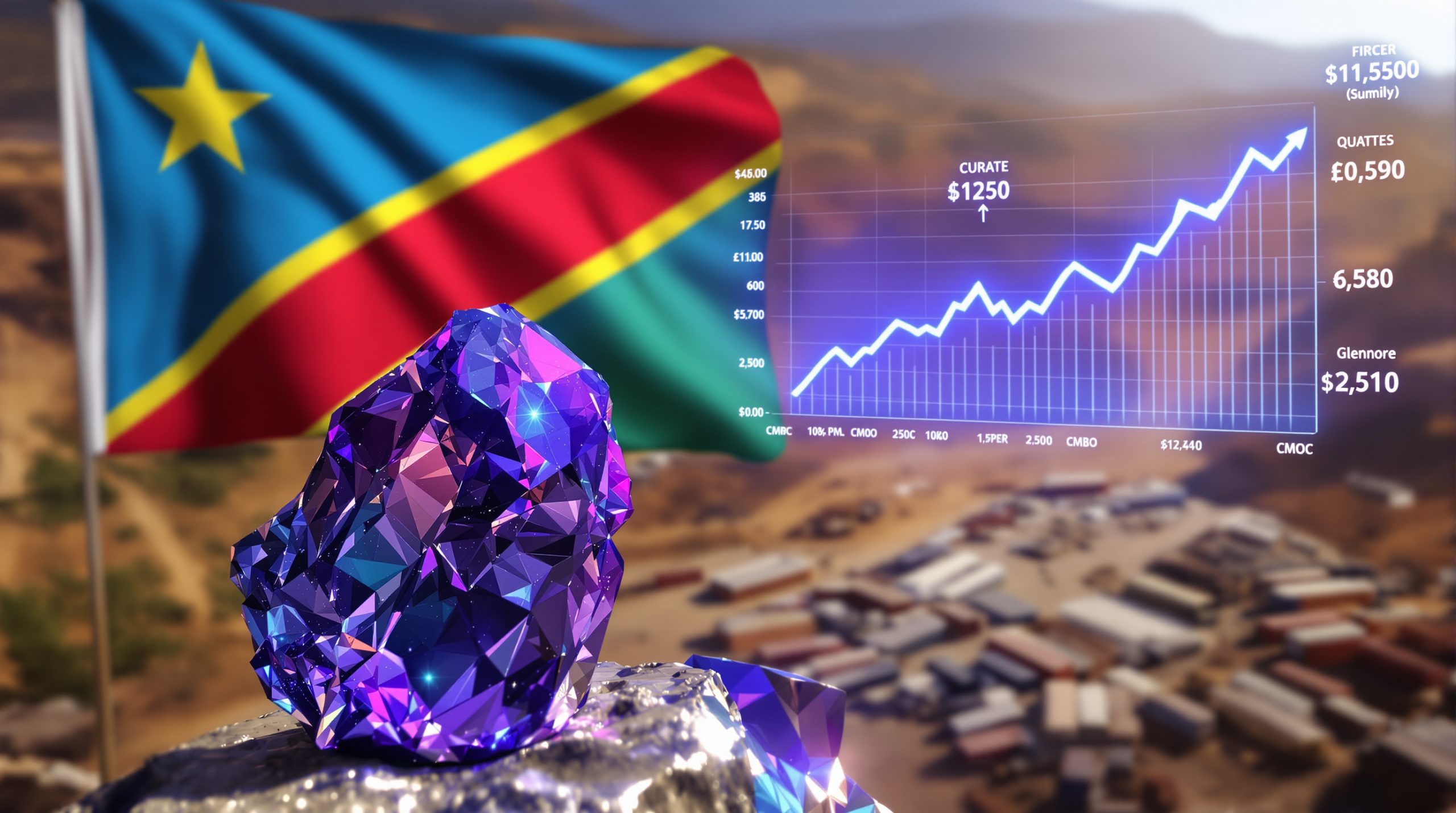Understanding the Looming LNG Supply Glut: Causes, Impacts, and Market Outlook
The global liquefied natural gas (LNG) market is poised for a significant transformation in the coming years, with experts warning of a potential oversupply situation that could reshape industry dynamics and energy economics worldwide. This impending looming LNG supply glut represents both challenges and opportunities for various market participants, from producers and investors to importing nations and energy consumers.
What's Driving the Coming LNG Supply Glut?
The U.S. LNG Expansion Boom
The United States is spearheading an unprecedented expansion of LNG export facilities, with multiple major projects under construction or approaching final investment decisions. NextDecade's Rio Grande LNG facility exemplifies this aggressive growth trajectory, having recently reached a positive final investment decision (FID) on Train 4, which adds approximately 6 million tonnes per annum (mtpa) of production capacity. This development brings the plant's total capacity under construction to an impressive 24 mtpa, with several additional trains in various development stages.
The project's financial scale underscores the massive capital flowing into the sector, with Train 4 alone requiring approximately $6.7 billion in investment, structured with 40% equity and 60% debt financing according to NextDecade's announcement in September 2025.
Venture Global's Plaquemines LNG facility represents another significant addition to global capacity, having commenced production in December 2024 just 30 months after reaching FID—setting a new industry benchmark for rapid project execution. Upon completion, this facility will feature 36 electrically-driven liquefaction trains with a nameplate capacity of 20 mtpa, positioning it among the world's largest LNG facilities.
Cheniere Energy has also expanded its footprint with the first train of its Corpus Christi Stage 3 Liquefaction Project beginning production in early 2025. This expansion will add over 10 mtpa of production capacity through seven midscale trains, further bolstering US natural gas forecast capabilities.
Global Capacity Expansion Timeline
Industry projections indicate that global LNG capacity is on a steep upward trajectory, expected to increase from 550 billion cubic meters (bcm) in 2024 to 649 bcm by 2026, before reaching an impressive 890 bcm by 2030. This rapid expansion timeline has raised concerns about the market's ability to absorb such significant supply growth.
By 2026, analysts project that over 49.5 mtpa of new LNG capacity will come online globally, with an additional 57.9 mtpa expected within the same year. The majority of this expansion stems from U.S. projects, potentially creating a substantial imbalance between supply growth and demand evolution.
Supply-Demand Imbalance Projections
Market experts forecast that global LNG supply will approximately equal demand in the current year before shifting to a surplus of approximately 50 bcm in 2026. This imbalance is projected to widen dramatically to around 200 bcm by 2030 if all planned projects materialize according to schedule.
This anticipated supply glut mirrors similar concerns in oil markets, where analysts like Goldman Sachs have predicted an oversupply of 1.9 million barrels per day by 2026, driven by OPEC production impact potentially unwinding production cuts while American production continues to rise.
How Will the LNG Glut Impact Global Markets?
Price Pressure and Market Volatility
The looming oversupply situation threatens to exert significant downward pressure on LNG prices, creating potentially challenging economic conditions for producers and project developers. Similar to trends in oil markets, where prices are forecast to potentially sink to the $50s per barrel next year, LNG markets could experience increased price volatility as they adjust to the new supply reality.
Companies that have invested heavily in LNG infrastructure may face margin compression if prices fall below profitable thresholds. This risk is already reflected in market valuations, with Venture Global's shares declining by nearly 50% since its January 2025 IPO despite raising $1.75 billion by selling 70 million shares at $25 each. Similarly, NextDecade's shares dropped 18.6% following its Train 4 FID announcement, reflecting investor concerns about dilution, debt loads, and oversupply risks.
Regional Impact Variations
Europe stands to benefit substantially from the LNG supply boom. Having dramatically reduced its reliance on Russian pipeline gas from over 40% in 2021 to approximately 11% in 2024, Europe has successfully restructured its gas supply chains with Norway and the United States stepping in as key suppliers.
U.S. gas exports to Europe have surged 22% year-over-year in the first seven months of 2025, reaching 83 bcm according to Reuters data from August 2025. This increased supply availability has significantly improved Europe's energy security outlook, potentially resolving the continent's recent gas supply anxieties.
Asia-Pacific markets, particularly price-sensitive importers like India and emerging Southeast Asian economies, may also benefit from more competitive LNG pricing, potentially accelerating coal-to-gas switching initiatives in these regions.
Investment and Project Viability Concerns
Industry leaders have expressed growing concerns about the pace and scale of LNG capacity expansion. TotalEnergies CEO Patrick Pouyanné has explicitly warned that "the U.S. is building too many LNG plants," which could trigger a prolonged supply glut if projects come online as scheduled.
This sentiment reflects broader industry anxieties about potential overinvestment and the long-term economic viability of projects initiated during the current expansion wave. Companies with weaker balance sheets or less favorable contract positions may face particularly challenging circumstances if prices decline significantly.
What Strategies Are Companies Adopting to Navigate the Glut?
Financing and Risk Management Approaches
LNG developers are implementing various strategies to manage the financial risks associated with the looming LNG supply glut. NextDecade's approach to Train 4 financing exemplifies industry practices, with its $6.7 billion cost structured as 40% equity and 60% debt—balancing capital efficiency with risk management considerations.
Companies are also increasingly focusing on securing long-term offtake agreements before reaching final investment decisions, providing revenue certainty that can help weather potential market downturns. This traditional project financing foundation remains crucial, even as developers seek additional flexibility in their contract portfolios.
Contract Diversification and Market Positioning
U.S. LNG exporters are diversifying their customer bases and contract structures to enhance resilience amid market uncertainty. While long-term contracts remain the foundation of project financing, many operators are incorporating more flexible terms and spot market optionality to capitalize on potential arbitrage opportunities.
Italy's Edison recently demonstrated continued European appetite for long-term supply security by signing a 15-year deal with Shell to purchase U.S. LNG. Similarly, Japan's JERA is reportedly exploring a 20-year LNG agreement with Alaska LNG, highlighting that major importers continue to value supply certainty despite potential oversupply concerns.
Regional Adaptation Strategies
Different regions are developing distinct approaches to navigate the changing LNG landscape:
-
Europe: Investing in infrastructure to accommodate increased LNG imports while simultaneously working to reduce overall gas dependency through renewable energy expansion and efficiency improvements.
-
Asia: Major importers like Japan and South Korea are securing long-term supply agreements to ensure energy security, while also advancing hydrogen and renewable initiatives as part of broader energy transition strategies.
-
U.S. Producers: Focusing on cost efficiency, accelerating project timelines, and enhancing operational flexibility to maintain competitiveness in a potentially oversupplied market.
What's the Long-Term Outlook for Global LNG Markets?
Market Rebalancing Projections
Despite near-term glut concerns, the long-term growth trajectory for LNG remains robust, with projections indicating an 11.6% compound annual growth rate (CAGR) from 2025 to 2030. This underlying demand strength suggests that markets will eventually rebalance, though potentially after a period of price volatility and reduced investment enthusiasm for new projects beyond 2026-2027.
The timing and extent of this rebalancing will depend on several factors, including the pace of global economic growth, energy transition policies, and the actual completion timeline of currently planned projects.
Geopolitical Factors Influencing the Market
Geopolitical developments continue to significantly shape the LNG landscape. The European Union has established a 2028 deadline for exiting Russian energy, rejecting demands for an earlier cutoff. This policy timeline provides important context for European gas importers' planning horizons.
Meanwhile, pipeline expansions, such as those connecting Russia to China, might reduce LNG demand in certain regions, further complicating the supply-demand balance. These cross-border infrastructure projects represent alternative supply channels that could compete with LNG in specific markets.
Technology and Efficiency Improvements
Technological advancements in LNG production and transportation are helping to reduce costs and improve efficiency across the value chain. Projects like Venture Global's Plaquemines LNG demonstrate how construction timelines can be compressed from the historical 4-5 years to as little as 30 months, potentially allowing more responsive adjustment to market conditions.
These efficiency gains may prove crucial in a more competitive pricing environment, enabling producers to maintain profitability even if market prices decline. Companies investing in cutting-edge liquefaction technologies, modular construction approaches, and digital optimization tools may gain competitive advantages.
How Are Investors Responding to the Changing LNG Landscape?
Market Valuation Shifts
Investor sentiment toward LNG projects has become increasingly cautious, as evidenced by the stock performance of companies like NextDecade and Venture Global. NextDecade, with its market cap of $2.1 billion and long-term debt of $2.5 billion, experienced an 18.6% share price decline following its Train 4 FID announcement—reflecting concerns about dilution, debt load, and market outlook.
Similarly, Venture Global's shares have declined by nearly 50% since its January 2025 IPO, despite the company's impressive project execution track record. These valuation trends suggest investors are increasingly pricing in oversupply risks and potential returns compression.
Investment Criteria Evolution
Investors are placing greater emphasis on project economics, offtake agreement security, and company balance sheet strength when evaluating LNG investments. Projects with secured long-term contracts, strategic advantages in production costs, or unique market access positions are better positioned to attract investment despite broader oversupply concerns.
Financial institutions are also increasingly incorporating energy transition considerations into their LNG investment decisions, favoring projects with lower carbon intensity and clear pathways to emissions reduction.
Capital Allocation Trends
Major energy companies are carefully balancing their LNG investment portfolios against other energy transition initiatives. TotalEnergies, which holds a 10% stake in Rio Grande LNG, exemplifies this approach by maintaining significant LNG exposure while simultaneously expanding its renewable energy portfolio.
This balanced capital allocation strategy reflects the industry's recognition that while LNG remains a crucial growth area, diversification across multiple energy vectors offers important risk mitigation benefits in an increasingly complex market environment.
What Does the LNG Supply Glut Mean for Global Energy Transition?
Natural Gas as a Transition Fuel
Despite near-term oversupply concerns, natural gas continues to play a vital role in the global energy transition as countries work to reduce coal dependency and balance intermittent renewable generation. The anticipated looming LNG supply glut could accelerate this transition by making natural gas more economically competitive against coal in price-sensitive markets.
Lower LNG prices may enable developing economies to prioritize gas over coal for new power generation capacity, potentially reducing carbon emissions while maintaining economic development objectives. However, this transition faces various challenges, especially in countries dealing with Canada's energy transition challenges.
Impact on Renewable Energy Development
The prospect of lower natural gas prices resulting from the LNG glut could temporarily slow renewable energy adoption in markets where economics rather than policy drives energy choices. However, the long-term trend toward renewables remains strong, supported by declining technology costs, climate policies, and corporate sustainability commitments.
Energy planners and policymakers will need to carefully consider how changing LNG market dynamics might affect their decarbonization strategies and investment priorities. Furthermore, they must weigh these considerations against broader economic factors including US economy and tariffs which could influence energy consumption patterns.
Carbon Footprint Considerations
The LNG industry is increasingly focusing on reducing the carbon intensity of its operations, with new projects incorporating carbon capture technologies, electrification, and efficiency improvements. This trend will likely continue regardless of market conditions, as buyers increasingly prioritize lower-carbon LNG sources.
Several major LNG developers have announced carbon-neutral shipment initiatives and greenhouse gas reduction targets, recognizing that environmental performance is becoming an important competitive differentiator in addition to cost. For those looking to align their portfolios with these trends, a comprehensive investing guide 2025 can provide valuable insights.
FAQ: Understanding the LNG Supply Glut
When is the LNG supply glut expected to begin?
The supply-demand balance is expected to shift toward oversupply beginning in 2026, with the glut potentially reaching its peak around 2030 if all planned projects come online as scheduled. Market analysts project a surplus of approximately 50 bcm in 2026, expanding to around 200 bcm by 2030, according to IEEFA's analysis of LNG market risks.
Which regions will benefit most from lower LNG prices?
Price-sensitive importers in Asia, particularly countries like India and emerging Southeast Asian economies, stand to benefit most from lower LNG prices. Europe will also benefit as it continues to diversify away from Russian pipeline gas, potentially enjoying both improved supply security and more favorable pricing.
How might the anticipated glut affect investment in new LNG projects?
Investment in new LNG projects beyond those already under construction or nearing FID is likely to slow significantly as companies and financiers reassess the market outlook. Projects with unique advantages or secured long-term contracts will be prioritized, while more speculative ventures may struggle to attract financing.
Could geopolitical events prevent the anticipated glut from materializing?
Yes, geopolitical disruptions to supply chains, unexpected demand growth, or delays in project completion could all potentially mitigate the severity of the anticipated glut. However, the current trajectory strongly suggests some degree of oversupply is likely, even if its magnitude or timing varies from current projections, as confirmed by recent market analysis on the looming LNG surplus.
Navigating the Changing LNG Landscape
The looming LNG supply glut represents both challenges and opportunities for different market participants. While producers and project developers face potential economic headwinds, consumers and import-dependent regions stand to benefit from improved supply security and potentially lower prices.
The situation underscores the dynamic nature of global energy markets and the complex interplay between investment cycles, demand growth, and geopolitical factors. Companies and countries that adapt their strategies to this changing landscape will be better positioned to manage risks and capitalize on opportunities as the market evolves.
For the global energy transition, the LNG supply expansion offers a potential acceleration of coal-to-gas switching in the near term, even as the longer-term trajectory toward renewable energy continues. The key question remains whether market participants can navigate the coming period of oversupply while maintaining the financial health needed to support ongoing investment in both natural gas infrastructure and lower-carbon alternatives.
Looking to Profit from Early-Stage Resource Discoveries?
Discover potential market-moving mineral announcements before the broader market with Discovery Alert's proprietary Discovery IQ model, delivering instant notifications on significant ASX discoveries. Visit our discoveries page to understand how major mineral discoveries have historically generated substantial returns for early investors.




